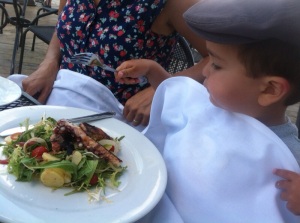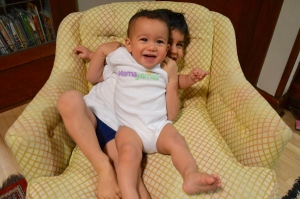 As you may have noticed from my many previous references to “Montessori,” my husband and I are big believers in the Montessori philosophy of education and parenting. The approach, developed over a hundred years ago by Dr. Maria Montessori, is a child-centered educational philosophy that emphasizes a high level of respect for each child, and allows children in a properly prepared environment to develop at their own pace.
As you may have noticed from my many previous references to “Montessori,” my husband and I are big believers in the Montessori philosophy of education and parenting. The approach, developed over a hundred years ago by Dr. Maria Montessori, is a child-centered educational philosophy that emphasizes a high level of respect for each child, and allows children in a properly prepared environment to develop at their own pace.
Dr. Montessori’s ideas really started to gain traction when she successfully taught sixty, thought to be “unteachable,” children in the slums of Rome using her methods. Since that time, the Montessori approach has been widely credited for producing especially enthusiastic learners and creative thinkers, and counts a disproportionate amount of successful entrepreneurs among its alumni (including both google founders, the founder of amazon and Julia Child).
While my husband did spend a couple years in Montessori school early on, our obsession with it came about almost randomly. We were looking for activities to do with our 10 month old when we first moved to Boston. We discovered the Montessori Parent Child Center in the South End. While we expected our son would an engaging experience through the once a week parent-child classes, we were shocked to find that they were life-altering for us as well. We felt that through these classes, we learned how to be better parents.
After my son grew out of the amazing parent child classes, my husband decided to start his own Montessori school for our son. It combined an authentic Montessori environment with more parental involvement than the traditional Montessori school. The school has been open for one year now, and it’s been incredible. Always a sensitive and cautious soul, my son has blossomed into a confident and social four year-old. I’m so grateful to the Montessorians who have helped to provide him (and us) with an environment where he could thrive.
I wanted to give this brief introduction to Montessori, as well as tell you why I’m such a big believer. It will also give context to some of my future posts that will explore more in depth some of the transformative things I’ve learned from the method.
As a rule, I believe that any philosophy is only as good as it’s execution. But if you are looking for an environment for your child that sounds like what I describe above, and you have Montessori in your area, I really recommend you check it out.





